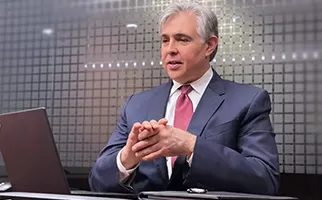UTILITY PATENTS
These are the most common types of patents and there are many good reasons why.
The Most Common Type of Patent
Generally, when someone thinks of a patent, they are thinking of utility patents. These are the most common types of patents. In a broad sense, they are granted to new machines, manufactured items, chemicals, other compositions of matter, and processes (such as software and business methods).
The term of a utility patent in the United States is 20 years from the date of filing.
The most important feature of all utility patents.
Utility patents end with a collection of textual claims. These are single sentence descriptions of the invention that set forth exactly what protection is granted by the patent. They are drafted in extremely formal, even archaic language. If you are new to this process, certain words within a claim do not mean anything remotely close to the definitions in the dictionary.
For example, the terms ‘comprising’ and ‘consisting’ have remarkably similar meanings according to most dictionaries. But they have entirely different meanings when used within a patent claim. It is important to know and understand the differences.
Why utility patents are so valuable.
The main reason that utility patents can be so valuable is that, if crafted correctly, they can be incredibly difficult to work around. Plain and simple, utility patents grant far broader and stronger protection for a useful invention than any other form of protection. A utility patent can be broader than the design patent, broader than a copyright and broader than any other form of Intellectual property protection for inventions.
If you’re a manufacturer and you want to maintain a monopoly on an innovative product, a utility patent is usually the way to go. If you want to make money by licensing your inventions, a utility patent is almost always the way to go.
Royalties with utility patents.
We represent many inventors that obtain patent royalties on their inventions, and almost all of them obtain those royalties on utility patents. In fact, there are billions upon billions of dollars of royalties paid on utility patents in the United States alone.
While design patents can be powerful in the right circumstances, design patent royalties are only a small fraction of the royalty that are paid on utility patents. Well drafted utility patents are simply better than any other form of intellectual property for generating royalties from inventions.
Let’s Talk About Your Invention
Phone Consultation
Find it easier to talk rather than write? Have a lot of questions you want to ask? Let's talk over the phone.
Virtual Consultation
Need to share something on screen with us? Like to see who you are working with? Let's get online.
In-Person Consultation
Prefer a face-to-face and a handshake? We have offices in Chicago or Naperville, Illinois.
Whether you are at the initial starting stage, or trying to protect and enforce what you’ve already have, we can help patent and protect your idea or invention. Reach out to us today. We will quickly set up a time to discuss your intellectual property with an experienced patent attorney.
Available 24/7
Patent FAQs
Here’s a list of the most frequently asked questions about patents. Open each to see our pages dedicated to that topic.
How long does it take to get a patent in Chicago?
The timeline varies depending on the type of patent and the USPTO’s backlog. On average, utility patents take 1-3 years, while design patents are typically processed faster.
What is the cost of filing a patent?
Patent costs vary based on complexity. A utility patent can range from $5,000 to $15,000+, including USPTO and attorney fees. Design patents generally cost less.
Can I enforce my patent if someone infringes on it?
Yes, patent owners can legally enforce their rights and may file lawsuits in federal court for injunctions or damages. A patent attorney can help navigate the process.
What is the difference between utility and design patents?
- Utility Patents protect the functionality of an invention (valid for 20 years).
- Design Patents protect the appearance (valid for 15 years).
Do I need a patent attorney to file a patent?
While not required, working with a patent attorney significantly improves your chances of success, ensuring a strong, well-drafted application and USPTO compliance.
How do I check if my invention is already patented?
A patent search helps determine if an idea is novel. You can search the USPTO database, but a comprehensive attorney-conducted search provides the most reliable results.
Experienced Patent Attorneys
The attorneys at the Law Offices of Konrad Sherinian have extensive experience in patent matters. We’ve helped clients obtain numerous patents, including more difficult categories such as software, electronics, and the mechanical arts. We have obtained numerous patents in the United States and throughout the world. In addition, we have litigated patent cases on behalf of both plaintiffs and defendants in District Courts throughout the United States.




